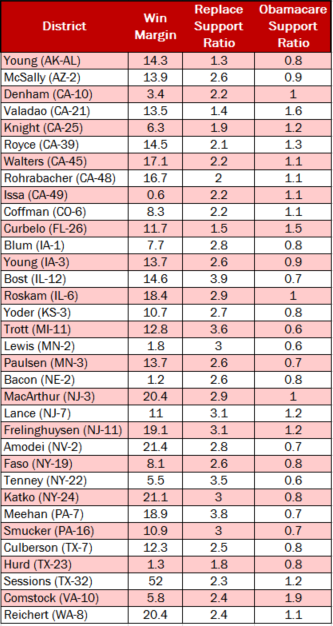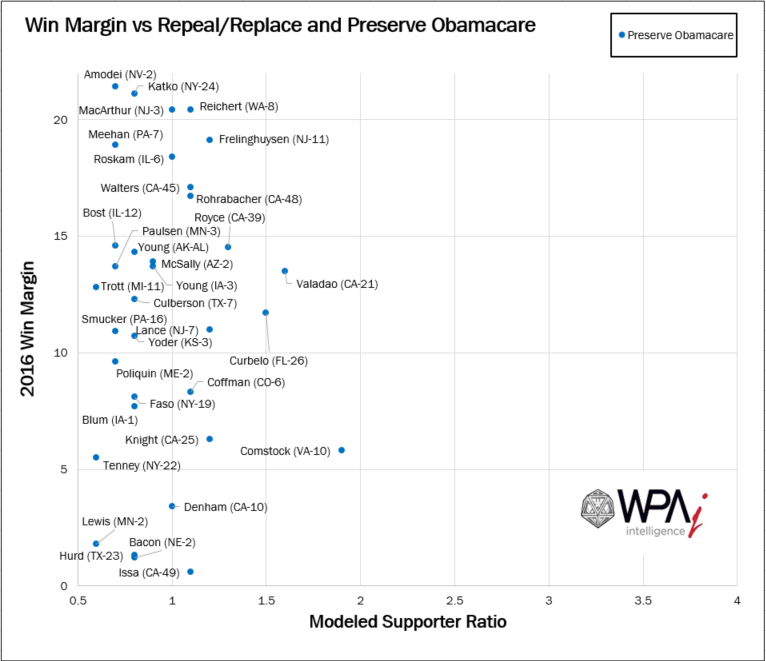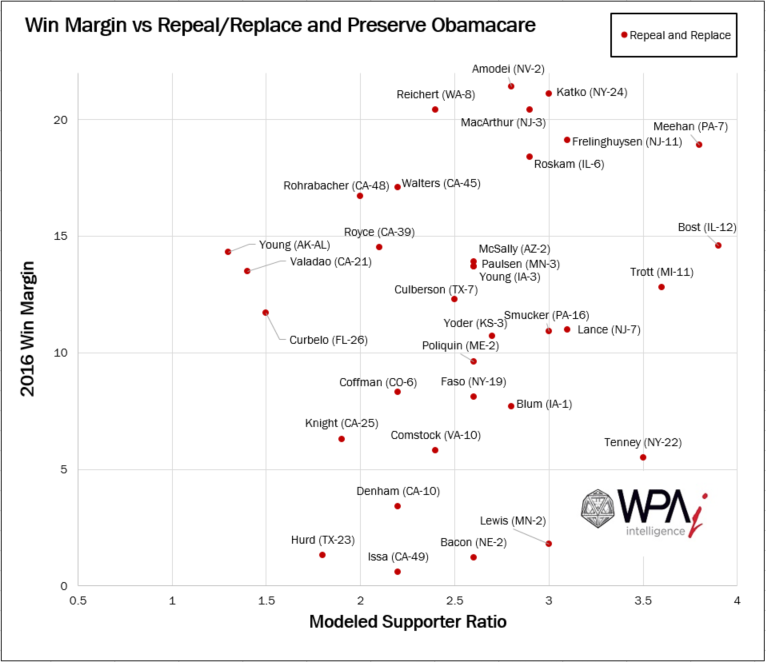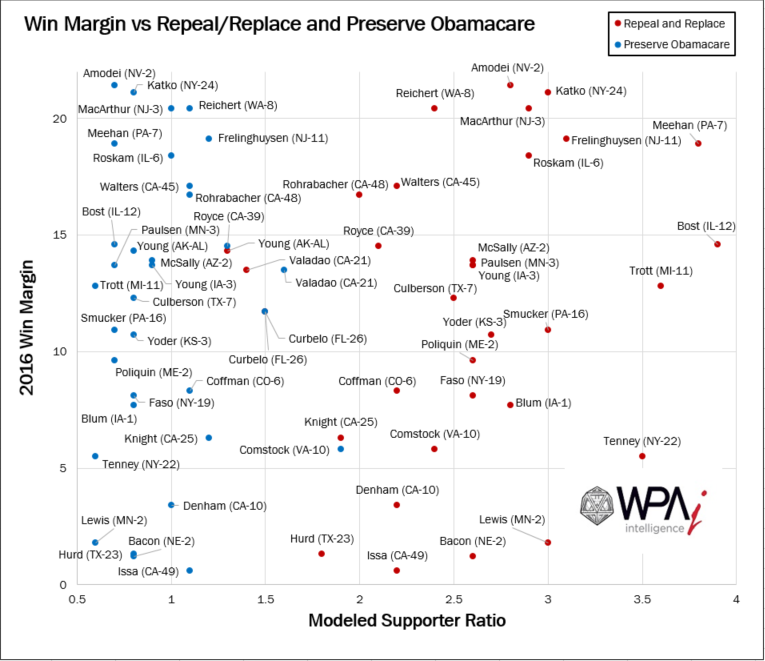Immediately after the House voted to repeal significant portions of Obamacare, the typical media players began proclaiming that this would be a killer for Republican candidates in 2018.
They based this, apparently, on poor polling numbers for the initial American Health Care Act and on a belief that Republicans would pay for their vote the way Democrats did for supporting Obamacare.
But WPA Intelligence’s models of support for Obamacare and support for replacing it with a market-based solution that lowers costs tell a very different story.
Looking at a potentially leading indicator, like the special election in Georgia’s Sixth District, or at the districts of the most at-risk Republicans who voted “Yea” on the AHCA show little evidence for the media narrative that Americans have a deep affection for Obamacare or that it is preferred over a solution which reduces regulations, cuts taxes, and increases choice.
Georgia Six: A Potential Leading Indicator
Recent media reports claim that the special election in Georgia’s Sixth District may set a record as the most expensive congressional special election ever. And some have posited that, despite being an open seat, it will be the first test for messaging against Republicans’ efforts to repeal Obamacare.
WPAi’s models suggest that this would be an unsuccessful line of attack for Democrats.

For every ten Obamacare supporters in Georgia’s Sixth District, there are nine opponents, indicating that there is limited affection for the current system. At the same time, there is overwhelming support for an alternative that repeals and replaces Obamacare, with nearly three supporters for every opponent.
The Most Competitive Districts
Looking at 25 of the most competitive Republican-held districts in the country again suggests that there is limited damage that this vote will do to Republican candidates. Support for Obamacare only exceeds opposition in twelve of the districts, according to WPAi’s models. And only one of these districts had more Obamacare supporters than did a replacement that reduces regulations, cuts taxes, and increases choice.

The following graphs plot two important data points for looking at a Member’s vulnerability in 2018. Along the Y-axis is their margin of victory in the last election. In the first graph, the X-axis represents the ratio of supporters for a market-based approach to repeal and replace Obamacare, a reform closer to what Republicans have campaigned on. The higher and farther to the right a Member is, the safer they are in 2018.

The second graph plots the ratio of Obamacare supporters in a Member’s district along the X-axis. You see a dramatic shift to the left, closer to the “Danger Zone.


This contrast demonstrates that members are on much safer ground supporting a reform like what the House recently passed, rather than doing nothing and keeping Obamacare in place. It should signal to the Senate that making the final reform closer to what Republicans have campaigned on for years — reform that increase competition, offers more choices, reduces regulations — makes it a winning issue rather than a liability.
Conclusion
The “Republican Obamacare” narrative is appealing in its simplicity, but our most recent models on the issue suggest that this analogy is simply wrong.
At its absolute worst, this vote might be a mild negative for some of the Republican members in highly competitive districts who voted for it. And even that is only likely to be true if a final replacement package does not accomplish what Republicans have promised.
While the typical sources focus on coverage, voters care a lot more about their health insurance costs than they do about the total number of people covered by health insurance. If Republicans succeed in lowering health insurance costs by reducing regulations, increasing competition, and giving Americans more choices, then they are more likely to benefit than to suffer from an Obamacare repeal.
Model Approach
As part of WPAi’s monthly modeling updates, which include national models of key current policy issues, our in-house data science team developed three predictive analytics models based on the full consumer data enhanced national voter file to test support for the various approaches to health care reform. These were:
· likelihood of each individual voter to support or oppose “preserving the Affordable Care Act, also known as Obamacare, mostly as it is.”
· likelihood of each individual voter to support or oppose “the Republican health care plan that eliminates the individual mandate, replaces income based subsidies with subsidies based on age and family size, but leaves many other elements of Obamacare in place.”
· likelihood of each individual voter to support or oppose repealing Obamacare and enacting a “plan that allows for the sale of insurance across state lines, expands Health Savings Accounts, incentivizes states to create high risk pools, block grants Medicaid, and is portable so it can be taken from job to job.”
For more details on WPA Intelligence, these models, our approach or any other details, please visit our website (www.WPAIntel.com) or email me directly: CSW@WPAIntel.com
